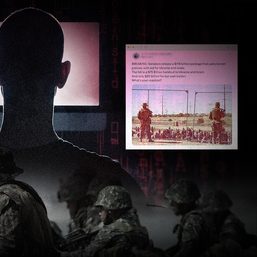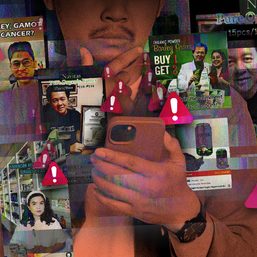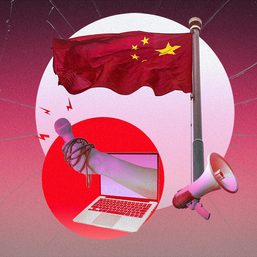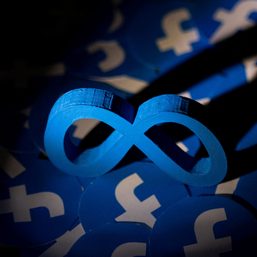SUMMARY
This is AI generated summarization, which may have errors. For context, always refer to the full article.

MANILA, Philippines – When LA Tenorio matches playmaking wizardry with Paul Lee, or Japeth Aguilar goes hard for the rebound against Ian Sangalang, a whole arena packed with screaming fans erupts in riotous cheer.
It is Manila Clasico, a game which pits the PBA’s two most popular squads, Barangay Ginebra versus Magnolia Hotshots.
Long before the term Manila Clasico was born, the rivalry between Ginebra and Magnolia was the perennial hottest ticket in town for fans of the PBA. The rivalry traces its roots to 32 years ago during the PBA’s 14th season.
After winning the 1986 Open Conference, Ginebra struggled in 1987. Two key players left the team, namely Francis Arnaiz, who retired midway through the Open Conference, and big man Romulo Mamaril.
Ginebra dealt with injuries to playing coach Robert Jaworski and Terry Saldaña, who was lost for the season. So not surprisingly, Ginebra finished the year second to last in win-loss record.
The present day Magnolia, on the other hand, traces its roots to the Tanduay Rhum Makers ballclub, one of the most successful teams of the mid-‘80s.
Tanduay won the first two conferences of the 1986 season, including the All-Filipino title against Ginebra.
The Rhum Makers had a legitimate crack at the Grand Slam until they encountered import woes in the 3rd conference. They then won the 1987 Open Conference with David Thirdkill, who was named Best Import.
New glamour team
Tanduay was led by Jaworski’s arch-nemesis, El Presidente Ramon Fernandez. Naturally, the bad blood between the two biggest names in the league translated to epic encounters between their ballclubs. (READ: Ultimate rivalry: Big J vs El Presidente)
Ginebra was due for a bounce-back in 1988 after its uninspiring performance the previous season. Jaworski was healthy. They plugged its hole in the middle when Mamaril came back after Tanduay disbanded at the end of the 1987 season.
Purefoods acquired the rights to the franchise left by Tanduay and absorbed 6 of its players – Fernandez who was named the team’s playing coach, Onchie Dela Cruz, 1978 MVP Freddie Hubalde, big man JB Yango, 1980 Rookie of the Year Willie Generalao, and defensive specialist Padim Israel. They added Al Solis and Totoy Marquez from Formula Shell.
As an expansion team, Purefoods was awarded numerous concessions by the PBA. It was allowed to get 4 direct hires from the amateur ranks.
The team picked 4 members of the national team – Alvin Patrimonio (who could only join the ballclub beginning the 2nd conference), Jerry Codiñera, Jojo Lastimosa, and Glenn Capacio. The team was also given the top pick in the draft. They used it to select center Jack Tanuan.
Purefoods became the new glamour team of the PBA as its exciting rookies brought with them throngs of new fans. The team’s combination of youthful exuberance and and veteran savvy was the makings of a super team.
For its first ever PBA conference, the team called back Thirdkill.
Everyday man’s squad
Ginebra changed its name to Añejo in 1988. They remained the most popular team in the league. Their brand of play was the antithesis to the smooth and scientific way the likes of Purefoods and San Miguel played.
Jaworski molded a fighting unit that was the everyday man’s team – not relying on talent but on grit and determination, a bunch of guys who did not hesitate to put their bodies on the line and get into scuffles to further the team’s chances of winning.
The stark contrast in playing styles made the emerging rivalry a must-watch for fans.
Purefoods drew first blood, 116-110, in their highly-anticipated initial face-off. Thirdkill scored 45 points to match the output of Añejo import Jamie Waller.
The locals proved to be the main difference as 4 others scored in double figures for Purefoods while only Joey Loyzaga (26 points) and Dondon Ampalayo (10 points) contributed in double figures for Añejo.
The championship-like atmosphere in their first match served as preview to their succeeding encounters. Añejo exacted revenge in the second round to even the slate between the two teams, 127-122.
Añejo and Purefoods played against each other one more time in the semis for the chance to bag the last finals spot in the first conference. The upstart Purefoods squad escaped with a 111-109 overtime victory.
Purefoods eventually lost to Norman Black and San Miguel in 7 game in the championship.
Beyond Big J, El Presidente
One conference into the 1988 season and a number of close games between Añejo and Purefoods and the league realized there was a new draw that would keep fans hooked to the PBA.
The storyline no longer was limited to Jaworski and Fernandez. It also revolved around Ampalayo who had become second to the Big J in popularity, and Patrimonio, the biggest name to come out of the amateur ranks.
There’s also the Loyzaga brothers, Chito and Joey, who were the three-point shootout kings of the PBA, against up-and-coming gunners Solis and Lastimosa.
By the time the All-Filipino conference ushered in, there was already a new rivalry that could possibly approximate the popularity of the Toyota-Crispa matchups.
When Añejo and Purefoods made the finals of the All-Filipino, the PBA had on hand a dream finals series. It was a sure-fire blockbuster that assured the PBA of sold-out venues in every game in the championship.
Añejo came out on top and crowned itself champion in a finals series that gained notoriety for the controversial incident between Fernandez and Purefoods management. El Presidente was benched beginning Game 2 for allegations that were never proven.
Fernandez was traded before the 3rd conference to San Miguel for Abet Guidaben. But even without Fernandez, Purefoods had already built a solid fan base anchored on Patrimonio, who would become the leader and the face of the team.
Patrimonio and Codiñera continued to battle the likes of Marlou Aquino and Noli Locsin in the 1990s. Mark Caguiao and James Yap became the new faces of the PBA decades later and helped maintain the relevance and allure of the Añejo/Ginebra-Purefoods saga.
In this day and age, the only instances when PBA playing venues fill up are in the finals or when Manila Clasico is on deck.
The Manila Clasico remains the silver lining for a pro league that has seen its luster fade as live games no longer generate the same huge following which was commonplace decades ago. But the rivalry has endured for over 3 decades, and it will continue to make for compelling drama that will keep fans engaged and entertained. – Rappler.com
Add a comment
How does this make you feel?





There are no comments yet. Add your comment to start the conversation.